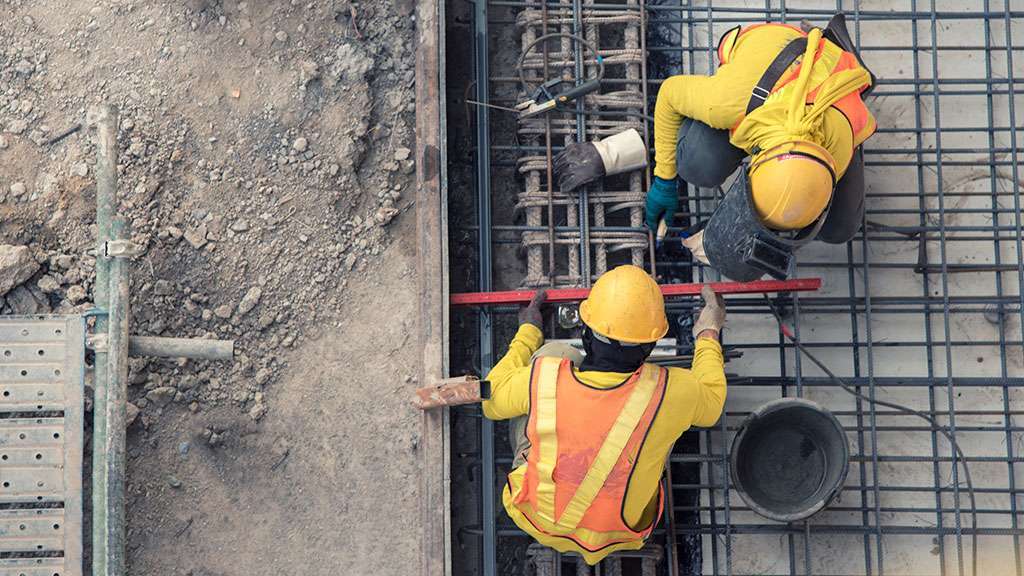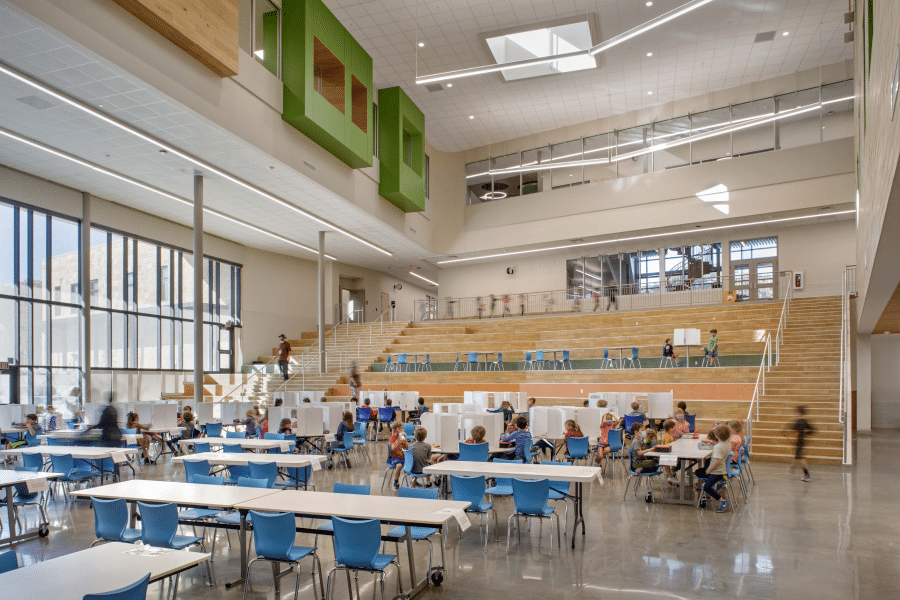
3 Economic Trends Poised to Impact Construction in 2023
Recession risk, labor shortages and a possible flurry of government investment appear likely to keep construction firms on their toes heading into a new year
Rising costs. Supply chain issues. Labor shortages. Lingering effects of the COVID-19 pandemic. Geopolitical turmoil. Federal legislation.
The list of stressors on the economy heading into 2023 is long. The construction industry is no stranger to weathering cyclical economic challenges. What will be different in 2023? Where should building professionals direct their attention?
Is an inflation-induced recession on the horizon?
“Most economic forecasters see a recession beginning before mid-year 2023, in part because of the really aggressive stance on the part of the Fed to increase interest rates,” said Kermit Baker, chief economist with the American Institute of Architects (AIA). But he believes it will be “fairly mild and fairly short.”
That may bring little comfort to construction firms like McHugh, a Chicago-based general contractor that works primarily on high-rises, hospitality and self-performed concrete construction. “We saw unprecedented escalation, about 3% per month on total project costs from February to November” of 2022, said Steve Wiley, the firm’s senior vice president. “Costs increased on every component of construction from lumber to steel, concrete, paint, anything roofing related.” He added he doesn’t see that changing any time soon.
Still, Baker of AIA believes that some of the current “corrections being made by the Fed will be bringing down inflation.” “It looks like mortgage rates are likely to peak sometime early to mid-2023,” Baker said. “While all of the things causing the problems won’t disappear, they will moderate pretty significantly.”

Architects are a good bellwether for the construction industry. AIA research indicates that design activity leads construction activity by nine to 12 months. “That suggests a nine- to 12-month runway with current conditions,” Baker said. “While we’re seeing little evidence of it now, there’s the possibility as we saw during the Great Recession that many projects that architects have designed may get stalled, delayed or canceled.”
A 2022 AIA survey of architects showed that firms estimated a 7% increase in revenue for 2022 on average. “But next year will be a good deal different,” Baker said. “For 2023, they’re projecting flat revenue, a less than 1% increase.”
Ken Simonson, Associated General Contractors of America’s chief economist, is skeptical about a full-blown recession. “I remain a perpetual optimist and don’t think the US will go into recession,” he said. “We’ll see at least a modest increase in employment and growth in GDP. Many people will continue to have paychecks coming at higher wage rates than in the past.”
Simonson also is hopeful that inflation will come down significantly. “I do think there will be shrinking demand for goods,” he said. “Retail and warehouse categories are very vulnerable.”
Persistent labor shortages poised to continue
The past few decades have seen a decline in the construction labor force at every level from plumbers to framers to architects. “In our market, finding craftspeople has been a concern for a while,” said McHugh’s Wiley. “There’s the aging workforce, attrition through retirement.”
Moreover, in other parts of the workforce such as building information modeling (BIM) and among other design and office professions, Wiley said many workers are relocating amid post-pandemic trends. “Quality candidates are in high demand and, as a result, salary expectations are pretty high, too,” he said. “We have to manage the balance of getting good talent and not busting the salary structure to do that.”
So far, these trends seem likely to persist throughout 2023. “There just are not enough people,” Simonson said. He points to a recent federal government report that measures monthly job openings and hires by industry. “The number of job openings in construction at the end of September 2022 exceeded the number of employees hired during the entire month,” he said, “with the implication being that the construction industry overall wanted to hire twice as many people as they were able to bring on board.”
Baker cites a 2016 National Association of Home Builders (NAHB) survey that asked 2,000 people aged 18-25 of their desired career paths; only 3% of respondents said construction. “In normal times the construction workforce is about 6% to 8% of our total labor force,” Baker said.

Furthermore, immigration is a major factor in the construction labor shortage. “About 30% of construction workers are foreign-born, second only to agriculture,” Baker said. “The immigration numbers have been down, and the consensus is they’re probably going to stay down for a while.”
Overall, Baker said, “we’re way short of what the industry needs, and the situation’s going to get worse in the coming years if something doesn’t change.”
Federal infrastructure spending kicks into gear
In November 2021, President Biden signed the Infrastructure Investment and Jobs Act (IIJA), which authorized $1.2 trillion for transportation and infrastructure spending, with $550 billion of that figure going toward “new” investments and programs.
“We’ll start to see some impact from IIJA in 2023,” Simonson said. “In just under a year, the White House put out a release saying $185 billion of money for projects has already been released, but I haven’t come across a contractor yet who’s had an award. I think we’re on the cusp of seeing that money turn into actual construction.”
While McHugh doesn’t take on government-funded projects, Wiley said he is concerned that “if IIJA really takes off, there can be more competition not just for labor but for materials.”
“With a supply chain that seems unable to keep up with current demand, this [type of investment] will stress it further,” Wiley added. “Some of our vendors have set up dual sourcing with facilities in North America coming online and taking the shipping component out of it. It addresses some of the geopolitical risk issues, but it may come with a higher price tag. Do we pay more for more certainty or save money and take the savings with more risky procurement strategies?”
In addition to IIJA is the amended “Buy American Act,” which has increased the amount of domestic content required for federally funded projects from the current level of just 55% to 60%, 65% and 75% over the next seven years.
“This is going to churn up the market a bit,” Simonson said. “In some cases, you’ll see increased demand for American-made. That might free up material and equipment for non-federally supported projects. It’s yet one more source of uncertainty. We’re still awaiting guidance, and federal agencies are scrambling to figure out what’s subject to [the new legislation] and what waivers are possible. It’s a learning curve for all sides.”
Share this post on:
Subscribe now
to receive newsletter with latest news weekly from Revu Experts Vietnam.
Related posts

Musselman & Hall Boosts Efficiency with Bluebeam
Musselman & Hall has embraced Bluebeam software to streamline their project takeoff and management processes.

How Bluebeam Revu’s Tool Chests Empower Civil Construction Companies
Explore how Bluebeam Revu’s Tool Chests contribute to the transformation of civil construction practices at Devcon Civil. Learn about the reasons behind Devcon’s investment in Bluebeam Revu and how it has elevated their project delivery capabilities.

How AECOM Fast-Tracked Project Efficiency with Bluebeam
How AECOM Fast-Tracked Project Efficiency with Bluebeam AECOM turned to Bluebeam to streamline communication and efficiency on multiple aspects of the building and modernization of

Bluebeam and Graphisoft Integration: Linking Design and Collaboration for Architects
As an architect, the essential thing to consider when buying new software is how it will integrate with your existing systems and processes.

